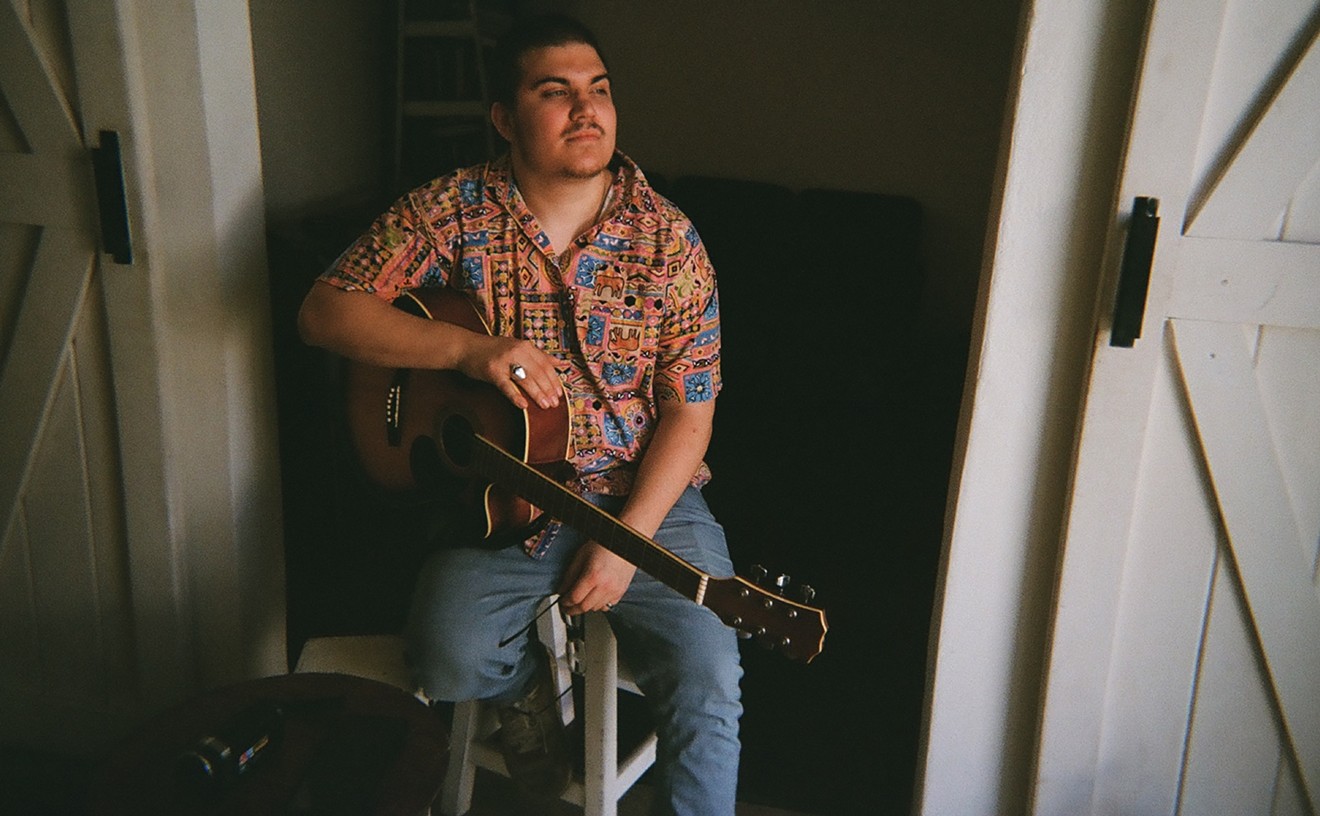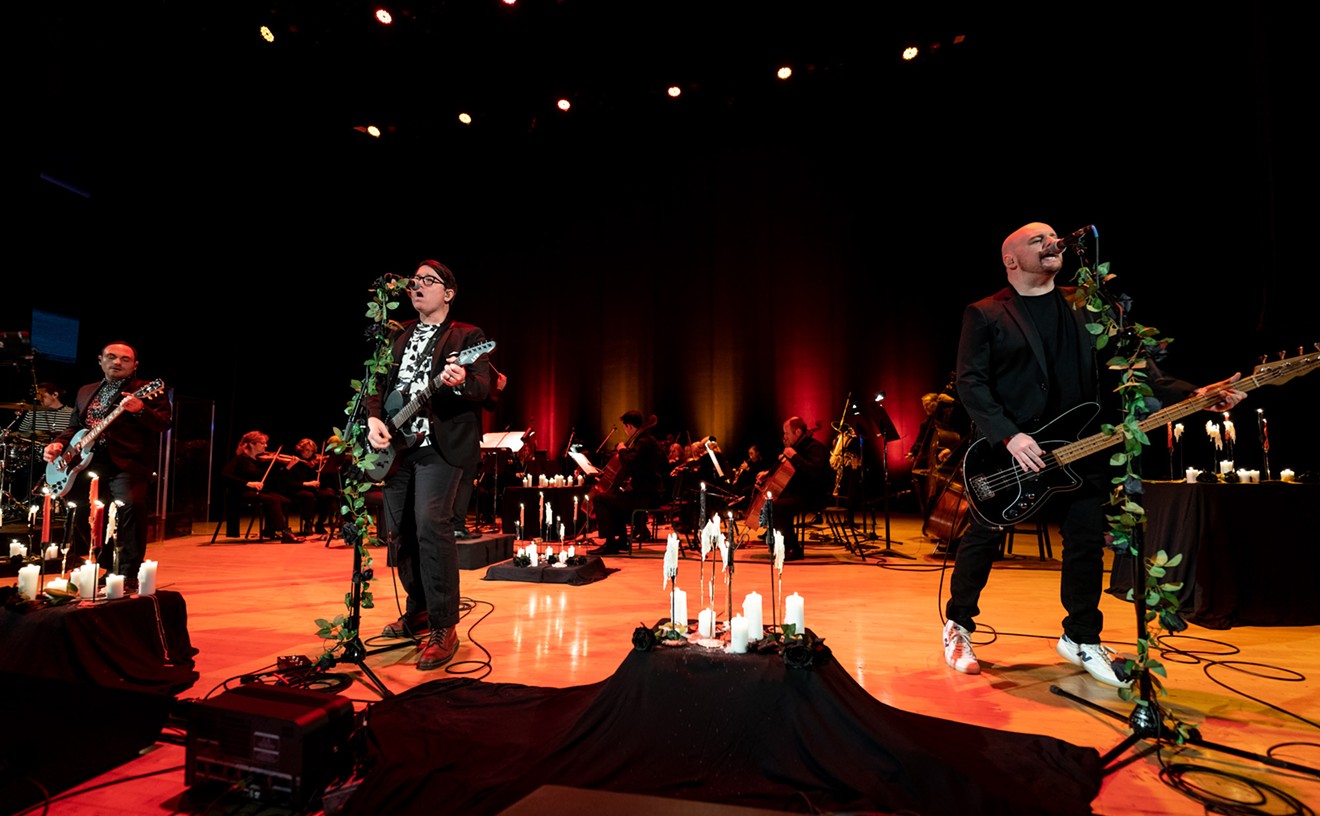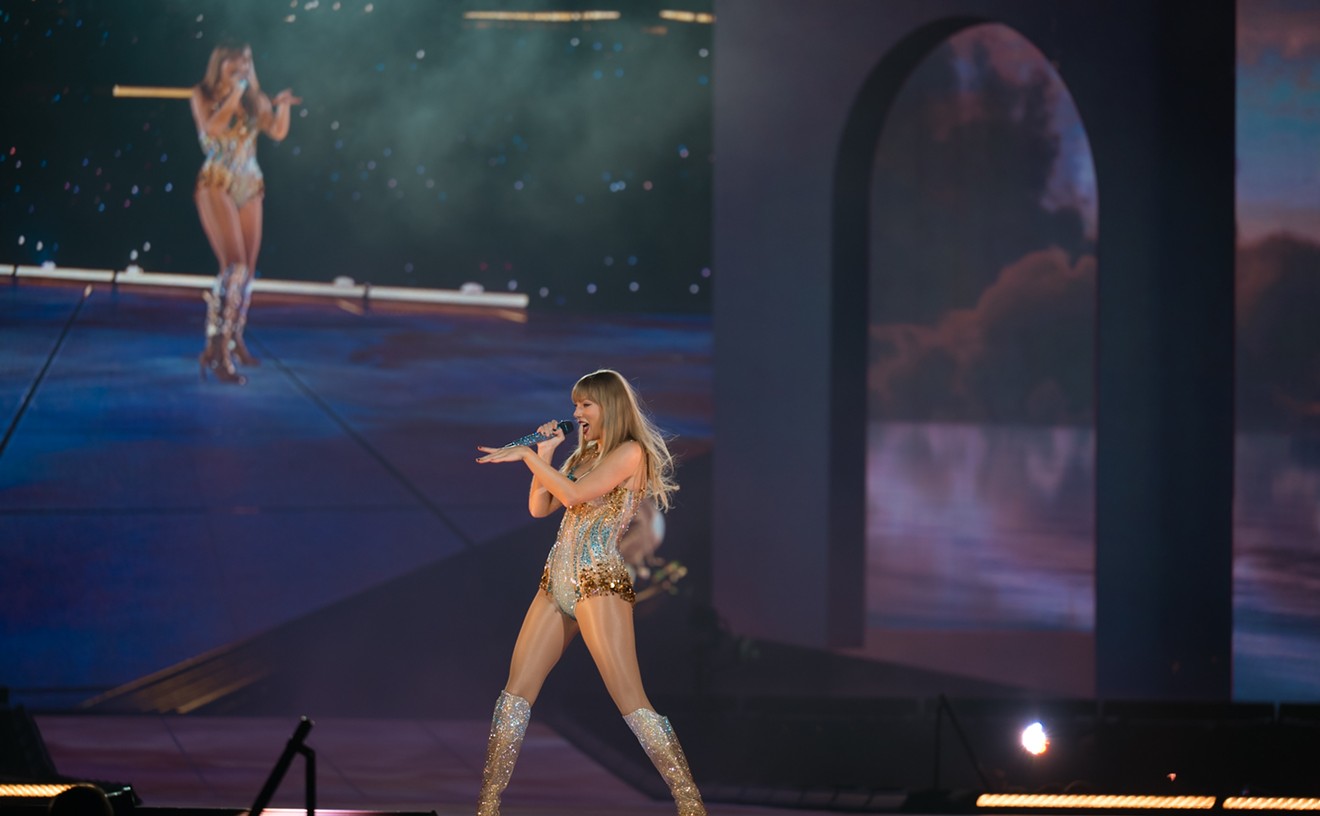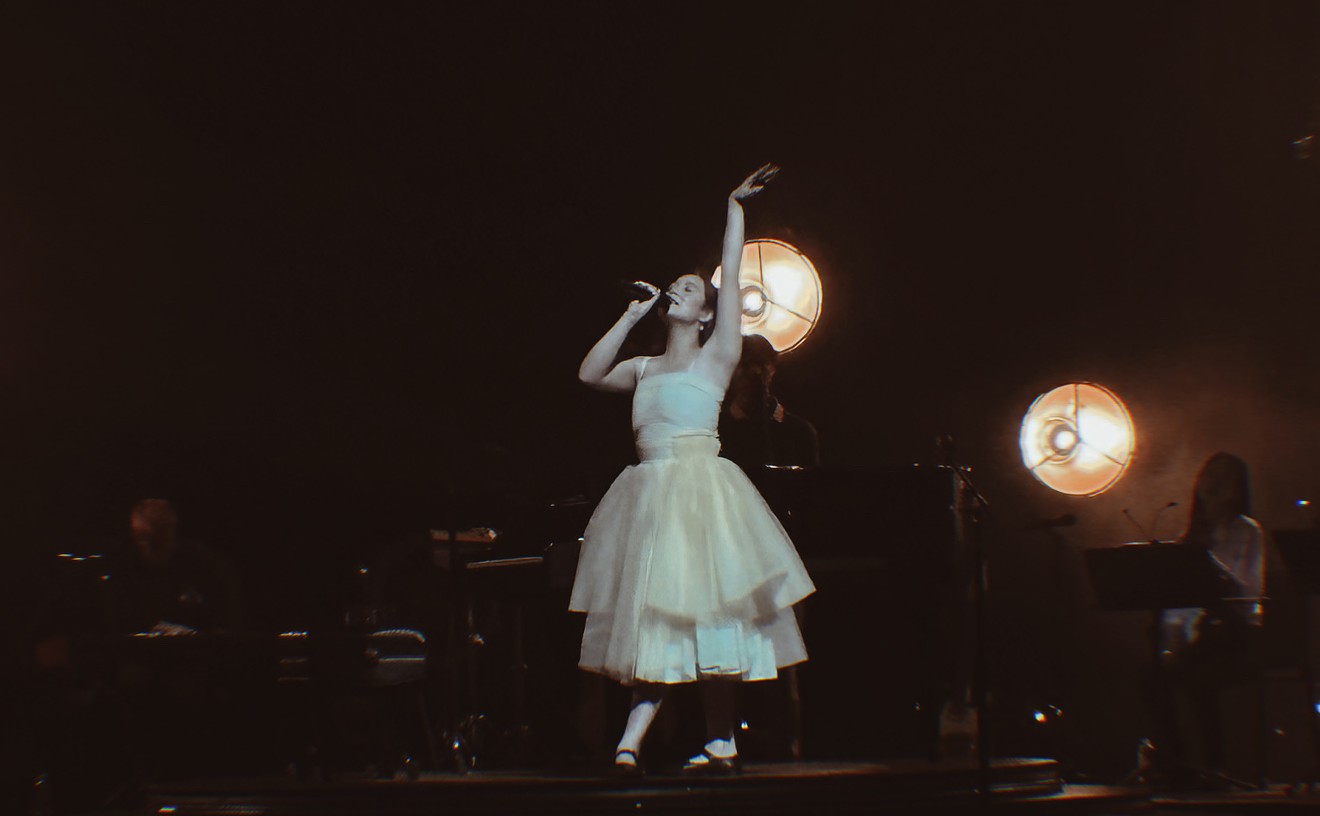The Cure's massive four-disc collection Join the Dots: B-Sides & Rarities, 1978-2001 (The Fiction Years) documents the evolution from snotty post-punks exploring dirges and druggy personal hells to technicolor romantics who tempered their despair and slivers of hope with psychedelic rock, orchestral subtlety and dance-floor deviance.
Naturally, such diversity polarizes The Cure's catalog and often its fanbase. Ones who embrace the regretful riff surfing on "Boys Don't Cry," feline tap dance of "The Lovecats" or trumpets-swinging-'round "Why Can't I Be You?" may despise the sheer lunacy of "Friday I'm in Love" and feel understandable wariness about the band's upcoming "heavier" collaboration with nu-metal kingpin Ross Robinson. In an interview in 2001, Smith ruminated on the challenge of satisfying his creative muse and the legions of followers anticipating his every move.
"Back at the very outset, when we were just making music for our own enjoyment...the audience didn't really come into it, because we didn't have an audience," he said. "I had no idea anyone wanted to listen to what we were doing. There were moments during the acoustic session when we finished a song and I'd think, 'That was really good,' and then I'd have to think, 'Well, was it good enough for anyone else to hear?' That for me is a funny reawakening. When you first start out, you don't really care what anyone else thinks.
"[But] it dawned on me over the years that I really like it when the group affects other people. I really enjoy seeing them be affected. I always thought I was just doing it for my own reasons--which I have been doing--but I think that probably satisfying the audience has been higher up on the list than I had at first realized."
Dots is indeed propelled by the friction between The Cure's devil-may-care musical expression and an awareness of how its fanbase perceives the group. The boxed set is meticulously wrought, freely expanding on the sonic ideas of the original albums, rather than a landfill of drunken throwaways and half-formed filler. Silly covers--a flipside staple--are limited to a schmaltzy lounge rendition of David Bowie's "Young Americans" and an 11-second hardcore goof on the Doors' "Hello I Love You." The bluesy bar-band version of the latter and the trip-hop-in-an-industrial-factory version of Jimi Hendrix's "Purple Haze," in contrast, are ace reinventions. Another popular B-side cop-out--the indulgent extended single mix--is also absent, replaced instead by a tropical-percussion deconstruction of alt-rock radio fave "Just Like Heaven" and a snappier dreampop take on the album cut "How Beautiful You Are."
A few instances of hilarity do crop up, like 1978's whirling dervish "Do the Hansa," ridiculing their first label, Hansa, but sounding more like German Keebler elves prancing around band practice. Still, the band's emotional upheavals are also painstakingly formed. The album spanning 1978-1987 paints a stark portrait of The Cure's demons: The Faith-era instrumental "Descent" scrapes out notes like a chisel on granite; "I'm Cold" resembles classic rock laid waste by Public Image Limited; "10:15 Saturday Night" bounces with paranoid impatience. Some are odd, but never unlistenable, artifacts: 1982's banshee yowl "Lament (Flexipop Version)" and eerie synth chatterer "Just One Kiss," dating back to a time when The Cure was essentially broken up; "Mr. Pink Eyes," with ghostly harmonica and piano palpitations, and "Happy the Man," a trippy, befuddled and vaguely Eastern noodler, both created while under the influence of chemicals.
Still, in the context of music popular at the time in the United States and U.K. --from chilled New Romantic detachment and Day-Glo New Wave to bloated arena dinosaurs and light-rock dreck--The Cure's style is quite original. They have the standard "Cure sound." Like their mopey peers The Smiths, who rode Morrissey's cheeky ambiguity and anguished wail to rabid acclaim during much of the same period, Robert Smith stamped any song he appeared on with his cries of alienation. But by the time The Smiths broke up in 1987, they were trapped in a jangly, eternal adolescence, unable to break out of their lyrical spiral of irony, doubts and insecurity. The Cure's deft ability to capture its narcissistic, teenage expressions while managing to shape-shift synths, guitars and drums into distinct mood pieces was the band's Darwinian trump card, allowing it to thrive in spite of the turmoil.
These metamorphoses, of course, had much to do with their lineup's revolving door--Smith is the lone original member to have remained in the band for its entire existence. But The Cure's career-long penchant for experimentation emerges on the two discs covering the group's commercial peak years as well, 1987-1992 and 1992-1996. While both have plenty of dreamy, glum numbers ("Play," "Fear of Ghosts") and exultant, dizzy yowls ("Halo") that exemplify their successful formulae, the tangents from such towering chords are much more intriguing. A 12-inch remix of "Hey You!!!" utilizes free jazz, "A Japanese Dream" roars psychedelically and "2 Late" and a 12-inch mix of Wish's "Doing the Unstuck" are New Order-esque synthpop hums. For even stronger contrast, their Crow soundtrack contribution "Burn" throbs with apocalyptic flutes and low-end riffs boiling like black blood, while strings dart daintily through "Adonais."
And when these experiments go awry--the fourth and weakest disc, covering 1996-2001, features a grating robotone Curve mix of "Just Say Yes" and Paul Oakenfold's limp, jungle-spooky retooling of "Out of This World" that particularly shred the nerves--their boldness still deserves commendation. Indeed, these tracks aren't artistic failures, only representations of how The Cure has always challenged its audience and itself without worrying about commercial repercussions. "The band to me has always been not slipping into kind of a role, [not] just going through the motions," Smith said in that same 2001 interview. He's right: Dots reveals The Cure as musicians battling inner darkness and expectations from within and without--and eventually finding hints of levity, if not bliss.










